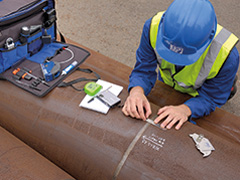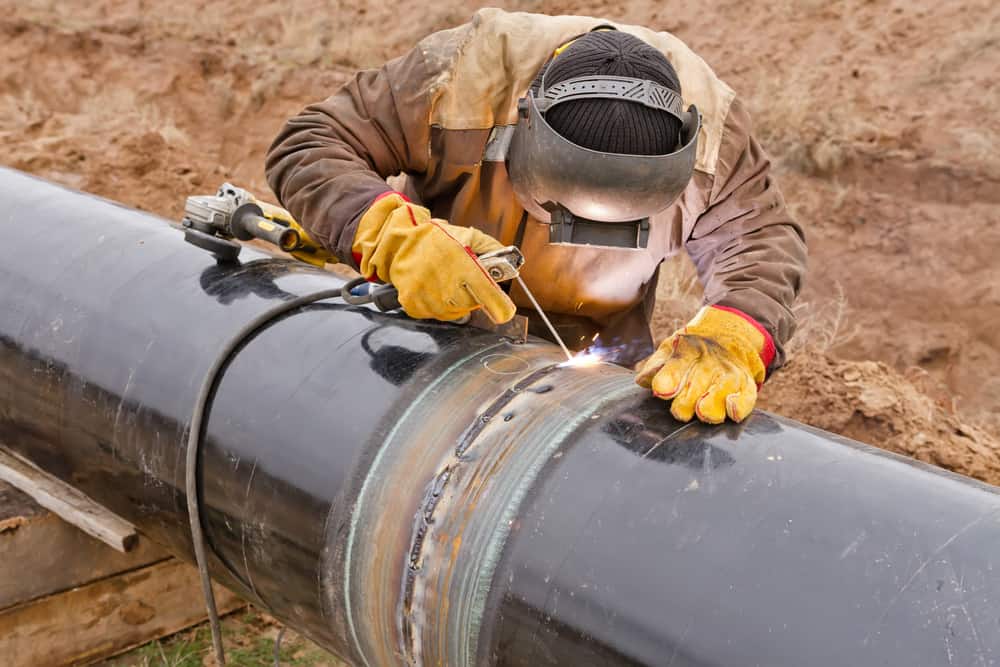The Significance of Thorough Welding Inspection in Industrial Applications
In the world of commercial applications, the importance of careful welding inspection can not be overstated. As we discover the multifaceted benefits of thorough welding inspections, one must think about the more comprehensive implications on security, integrity, and cost-effectiveness in commercial procedures.
Enhancing Structural Integrity
When it involves welding inspection in industrial applications, enhancing structural integrity is vital. The key objective of welding inspection is to guarantee that the welds are capable of bearing the expected stresses and tons they will certainly come across in service. This involves a complete analysis of the welds' measurements, placement, and overall quality, guaranteeing they fulfill the defined codes and standards. Precise inspection methods, such as aesthetic examination, ultrasonic screening, and radiographic screening, are critical in recognizing concerns that might jeopardize the structure's safety and functionality - Welding Inspection Madison.
The value of preserving structural honesty in bonded structures can not be overemphasized. Badly carried out welds can bring about catastrophic failures, resulting in costly repairs, downtime, and also endangerment of human lives. For that reason, examiners play a crucial function in the lifecycle of commercial parts, supplying assurance that the welding procedure supplies the wanted toughness and durability.
Moreover, advanced technologies, such as phased array ultrasonic screening and electronic radiography, deal boosted capacities in identifying potential weak points, permitting rehabilitative steps prior to concerns intensify. By focusing on the stability of welds via meticulous examination, markets can guarantee operational effectiveness and extend the long life of their framework.
Determining Welding Flaws
Recognizing welding defects is a critical element of guaranteeing the security and dependability of bonded structures. Usual welding problems include porosity, fractures, incomplete fusion, and damaging.

Skilled examiners utilize both aesthetic exam and advanced non-destructive testing (NDT) approaches, such as ultrasonic or radiographic testing, to find these defects. The prompt identification and rectification of welding defects are vital to preserve the structural integrity and long life of commercial elements.
Making Certain Conformity Requirements
Conformity with well-known standards, such as those given by the American Welding Culture (AWS) and the International Company for Standardization (ISO), ensures that welds meet minimum safety and high quality needs. These requirements encompass a broad array of standards, consisting of product requirements, welding procedures, and certification of welders.
Normal audits and examinations are important in verifying compliance. Inspectors must have a comprehensive understanding of the appropriate requirements and be experienced at using different non-destructive testing (NDT) approaches to evaluate weld high quality. By making certain that welding techniques straighten with look here conformity criteria, business mitigate the risk of non-conformity, which can result in legal responsibilities and security dangers.
Furthermore, keeping conformity not only safeguards structural integrity however additionally improves a business's reputation in the sector. Stakeholders and customers are more probable to trust fund firms that regularly show a dedication to top quality and safety and security with extensive compliance. Hence, ensuring compliance criteria is an essential part in the successful application of welding in industrial applications.
Decreasing Maintenance Expenses

The application of innovative non-destructive testing (NDT) methods, consisting of ultrasonic, radiographic, and magnetic my company bit inspections, boosts the ability to detect subsurface problems without compromising the architectural honesty of elements. By employing these methods, industries can substantially extend the solution life of their equipment, reducing downtime and the linked financial worry of maintenance tasks.
In addition, a robust welding assessment regimen supports the optimization of maintenance timetables, shifting from reactive to anticipating upkeep techniques. This aggressive approach not only cuts unexpected failures however likewise streamlines resource allowance, making certain that maintenance efforts are concentrated and reliable. Eventually, the financial investment in rigorous welding evaluation is countered by the significant savings realized with decreased maintenance needs, adding favorably to the total functional efficiency of industrial business.
Improving Precaution
Welding evaluation plays a vital function in this context, as it ensures that all links and joints satisfy strict safety standards. Comprehensive assessments help recognize flaws such as fractures, porosity, or insufficient combination that could endanger structural honesty.
To enhance precaution, adopting innovative non-destructive testing (NDT) techniques is crucial. Techniques like ultrasonic pop over to this site testing, radiographic screening, and magnetic particle assessment allow for comprehensive evaluation without damaging the framework. These innovations make it possible for inspectors to find concealed flaws early in the building process, facilitating timely rehabilitative activities. Furthermore, carrying out a robust high quality control system that consists of regular training for examiners and welders guarantees adherence to developed safety requirements.
Finally, cultivating a culture of safety within the organization highlights the value of detailed welding inspections. Encouraging open interaction and collaboration among designers, welders, and inspectors contributes to a shared dedication to safety and security quality. Welding Inspection Madison. In doing so, markets can protect their operations, protect personnel, and maintain public count on

Conclusion
Comprehensive welding examination is essential in commercial applications, considerably boosting architectural stability and reliability. Inevitably, the persistent implementation of welding inspections plays an essential role in preserving functional efficiency and security in commercial settings.
As we check out the complex benefits of thorough welding examinations, one should take into consideration the broader implications on security, integrity, and cost-effectiveness in commercial operations.
The main objective of welding examination is to ensure that the welds are capable of bearing the anticipated lots and stresses they will certainly encounter in service. Effective welding evaluation plays an important duty in decreasing these costs by guaranteeing the stability and durability of welds, consequently alleviating the threat of early failings.Detailed welding inspection is essential in industrial applications, considerably enhancing structural integrity and reliability. Ultimately, the thorough implementation of welding assessments plays a vital function in preserving operational efficiency and safety and security in commercial setups.